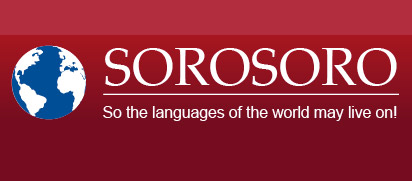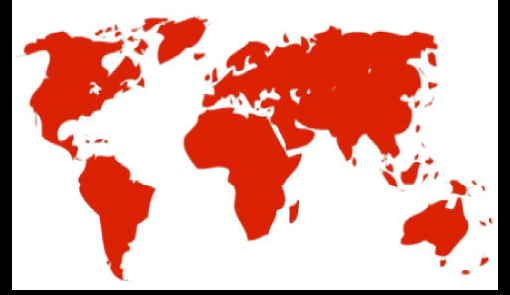Print  |
|


Songhay languages
Proofreading and additional data by Lameen Souag, post-graduate researcher, School of Oriental and African Studies, London, 2011.
Data on the Songhay languages
Alternative names: Songhai, Songai, Soŋay, Sonrhaï
Following Heath (1999) and Souag (to be published), we’ve chosen to refer to “Songhay languages” in the plural (see the “inner classification” section of this article). Note however that most mentions are those in the singular: Songhay.
Area: Songhay is spoken in a vast area covering the middle reaches of the Niger River, from Benin through to Niger, Burkina Faso, and Mali, as well as in the desert regions of southern Sahara, in Niger. A few speakers are also found in Nigeria, speakers of Dendi in the city of Salaga, Ghana, as well as in a few villages of Sudan and around the Tabelbala oasis, in southwestern Algeria.
Songhay was at its height at the end of the Middle Ages (1st-16th century) as the Songhay Empire, capital Gao, was expanding.
Classification: There is no consensus on the classification of the Songhay set. According to the Greenberg classification (1963), Songhay (or Songhays) belongs to the Nilo-Saharian language family. This classification has been supported by Bender (2000) and Ehret (2001), but also objected by a number of linguists, including Dimmendaal (2008) and Nicolaï (1990, 2003).
Studies have been carried out to draw Songhay closer to other language families, including the Mande languages. Nicolaï (1990) even ventured the hypothesis that Songhay could originally be a type of Berber that was “pidginized in the mold of a Mande language”. But this hypothesis hasn’t been verified at this point.
Thus the question of Songhay “filiation” remains open, and it appears wiser, for the time being, to consider it as an isolate, unaffiliated to any language family, until its affiliation be proven on a more consensual level.
Inner classification: Depending on the sources, Songhay is considered either as a vast dialectal continuum, whose variants aren’t always mutually understandable, or as a group of distinct yet close languages. There is no consensus regarding the exact number of these languages, or their names, or the boundaries separating Songhay dialects from Songhay languages.
We hereby follow Heath (1999) to whom the term “Songhay refers to a family of languages, often previously known as dialects“. Inner differences, particularly between the Southern Songhay group and the Northern Songhay group, or even within the Northern group itself, are too strong for them to be considered as mere variants of one and the same language. While understandability between Korandjé and Tadaksahak is low, for instance, it is almost non-existent between Korandjé and Western Songhay.
However, a consensual inner classification of the Songhay set could be considered organizing as follows:
Southern Songhay
Eastern Songhay, Gao variant: Gaawo Senni (“Gao idiom”), Mali.
Songhay Kaado, spoken on the right banks of the Niger River, regions of Tera, Tillaberi, and Ayorou, Niger.
Zarma, spoken on the left banks of the river, from Zarmaganda to Zarmatarey, in the Niamey region, Niger. Zarma is the Songhay variant counting the largest number of speakers.
Central Songhay, including:
Honbori Senni (“Hombori idiom”)
Jenne Ciini (“Djenne idiom”)
Maranse, spoken in the regions of Dori and Markoye, in the north of Burkina Faso.
Tondi Soŋay, or Tondi Songway Kiini (“Songhay of the cliffs”), spoken in Kikara, Mali.
Dendi, which includes variants of Kandi, Djougou, and Parakou, in Benin.
Western Songhay (Goundam-Timbuktu) refers to the Timbuktu variant: Tunbutu Ciini or Tunbutu Senni, literally “Timbuktu idiom”, Mali.
Northern Songhay
Tasawaq, spoken in central-eastern Niger, in the Ingal area.
Koranjé (Kwarandzyey) or Belbali
Nomadic Group
Tadaksahak
Tagdal (variant spoken by the Igdalen nomads) – Tabarog (variant spoken by the Iberogan nomads).
Western Songhay is sometimes considered as an “intermediate” form of Songhay between the Southern and the Northern group. Excluding the latter, the Southern group shows some homogeneity and can be considered as a vast group of dialectal variants, or very close languages, depending on the criteria.
The Northern group is much less homogeneous, and the language, strongly influenced by Berber and Arabic dialects, are very distant from the languages of the Southern group.
Tagdal-Tabarog is mentioned as “Tihisit” by certain sources such as The Ethnologue, although this designation is objected.
Number of speakers: The total population of Songhay speakers reaches 3,000,000 according to Bender (2000), including a very large majority of Zarma speakers (over 2,000,000).
Obtaining recent and detailed figures on the number of speakers of each language is difficult. According to Ethnologue.com, there could be around 200,000 speakers of Western Songhay and Songhay Kaado (which the website brings together as the same group); around 300,000 speakers of Eastern Songhay; around 2,400,000 speakers of Zarma; 130,000 speakers of Central Songhay; 30,000 speakers of Dendi; 100,000 speakers of Tadaksahak; around 20,000 speakers of Tagdal (the website provides no estimate for Tabarog, and this figure probably applies to both dialects), and 8,000 speakers of Tasawaq. Ethnologue.com mentions no estimate for Koranjé (around 3,000 speakers according to the Lameen Souag, 2010).
Vitality & Transmission: We have no available estimate regarding the vitality of each Songhay language. But it seems fair to assume that the global vitality of Zarma is fine and that its transmission is guaranteed. Considering the other languages, however, chances are that the situation is uneven. Those with the lesser number of speakers are probably threatened, despite the remoteness of certain populations in the north. The most worrying situation in certainly that of Koranjé, considered “severely endangered” by UNESCO.
Status: Songhay (under the name Zarma) is a national language in Niger, where it is spoken by 25% of the population. It is also a national language in Mali.
Songhay has no official status in the other countries it is spoken in.
Bibliography
Bender, Lionel. 2000. “Nilo-Saharan” In African Languages – An Introduction, Bernd Heine and Derek Nurse (eds), Cambridge University Press.
Dimmendaal, Gerrit. 2008. « Language Ecology and Linguistic Diversity on the African Continent » In Language and Linguistics Compass 2/5:842.
Ehret, Christopher. 2001. A Historical-Comparative Reconstruction of Nilo-Saharan. SUGIA – Supplement 12. Köln: Köppe.
Heath, Jeffrey. 1999. Grammar of Koyraboro (Koroboro) Senni, the Songhay of Gao. Rüdiger Köppe Verlag, Köln
Nicolaï, Robert. 1981. Les dialectes du songhay: contribution à l’étude des changements linguistiques. Paris: SELAF. 302 pp
Nicolaï, Robert. 1990. Parentés linguistiques (à propos du songhay), Paris, CNRS.
Souag, Lameen (Forthcoming). “The Subclassification of Songhay and its Historical Implications”. Journal of African Languages and Linguistics.
Additional links
APDS website on Songhay (French), offering a significant amount of information, maps, links, and articles on the Songhay language.
Please do not hesitate to contact us should you have more information on this language: contact@sorosoro.org
Fact sheets available for languages in this family :








